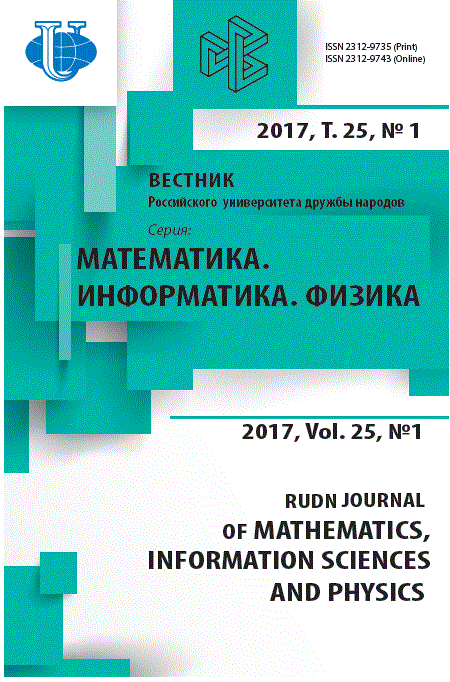The Wave Model of the Propagation and Changes of Linguistic Information in the Indo-European Model Language Community
- Authors: Egorov AA1, Egorova MA2
-
Affiliations:
- General Physics Institute, Russian Academy of Sciences
- RUDN University (Peoples’ Friendship University of Russia)
- Issue: Vol 25, No 1 (2017)
- Pages: 69-80
- Section: Mathematical Modeling
- URL: https://journals.rudn.ru/miph/article/view/15164
- DOI: https://doi.org/10.22363/2312-9735-2017-25-1-69-80
Cite item
Full Text
Abstract
Paper considers the wave mathematical model describing the distribution and change of linguistic information in Indo-European model linguistic community. Brief information about the Anatolian and Kurgan hypothesis of formation of Proto-Indo-Europeans (PIE) is given. The mathematical model of wave propagation and changing of information is described by system of integral-differential equations. Results of the preliminary theoretical analysis and computer modeling are given. In particular, an estimate of the maximum possible time (24000 years) of development/emergence of considered Indo-European “family” is obtained in the framework of this model. Results of computer modeling show, that from two main hypotheses of formation of the PIE - Anatolian and Kurgan, the latter better matches obtained by us temporary estimates. Finally, data on a hypothetical PIE alphabet - namely, the number of possible “characters/symbols” (or “letters”) alphabet of PIE on the basis of our data were obtained. Based on the results, it was found that the range of possible values for alphabetic characters is limited to about values: 3 32. In addition, there is a good correlation of our data with the findings of geneticists on a possible time of occurrence (14000-20000 years ago) of the haplogroup Y-DNA R1a (it is believed that PIE language speakers were primarily men with this haplogroup).
About the authors
A A Egorov
General Physics Institute, Russian Academy of Sciences
Email: alexandr_egorov@mail.ru
Educational and Scientific Center of the RUDN’ VOIR Council 38, Vavilov str., Moscow, Russia, 119991
M A Egorova
RUDN University (Peoples’ Friendship University of Russia)
Email: egorova_ma@pfur.ru
Foreign Languages Department of Humanitarian and Social Sciences Faculty 6, Miklukho-Maklaya str., Moscow, Russia, 117198
References
















